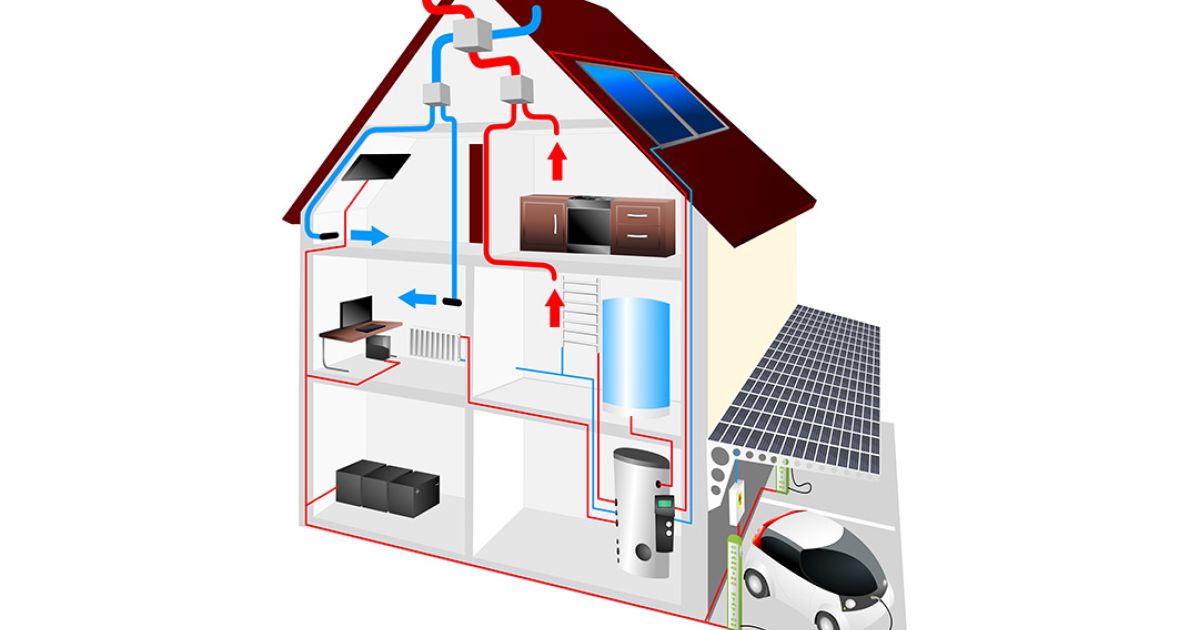The Differences Between HRV and ERV Systems
IMPORTANT NOTE: . Our company is located in British Columbia, Canada. If you are reading this article in another location, we hope you enjoy the information, but unfortunately we cannot service you.

We’ve talked about HRV systems before; if you need to brush up on your know-how, check out our previous blog post. One thing a lot of people can get confused about, however, is the other similar-sounding system that pops up in conversation: ERV systems.
What’s the difference, you ask? Great question! Though they sound similar, HRV and ERV systems are actually not as interchangeable as you may think. Let’s go over what exactly these systems are, the major differences between the two, and what each can bring to your home or work in terms of benefits and usage.
What is an HRV System?
An HRV system, or a Heat Recovery Ventilation System, takes the heated, stale, contaminated air to warm up fresh air. It does this through its heat exchange core and the two fans typically installed to create the desired effect. HRVs are flexible systems in that you can add them to your current HVAC equipment or install them as independent devices.
What is an ERV System?
An ERV system stands for Energy Recovery Ventilation. The system’s process is similar to an HRV in that it consists of exchanging the energy within stale air in order to treat the incoming outdoor air. However, an ERV goes a little further than the HRV. It takes the humidity from the air in the room and keeps it on the same side as the thermal envelope where the humidity came from.
So, What’s the Difference?
Let’s recap the differences real quick before getting to each system’s benefits:
- HRVs are best suited to homes in colder climates where excess humidity occurs during the hotter seasons; ERVs are best suited to homes in cold climates where that excess is not a problem.
- While both recover heat, the ERV goes further by recuperating what energy is trapped in humidity, thus greatly improving overall recovery efficiency.
- An HRV takes the stale air from inside and exchanges it with fresh cool air from outside.
- An ERV limits the humidity levels coming from inside your home while it’s hot outside and A/C is on, plus it limits the humidity being expelled from your home when it’s cold outside, low humidity levels are present, and a humidifier is being used.
How Can These Systems Help Me?
It’s definitely worth considering getting an HRV or ERV system installed if your daily life applies to the following:
- You have severe allergies, such as pollen and dust
- Your home is too hot, and the air too stale almost daily
- You want to keep the windows closed and the air cool when it’s hot, or the windows closed and the air warm when it’s cold, all without giving up fresh air
- Humidity and excess condensation in your home is an issue—this will depend on how old it is
Talk to a professional if you want to learn more about these systems!
At Rep-Air Heating And Cooling we provide our customers with many options that will best suit your needs from heating and cooling to refrigeration. Contact us today for your complimentary quote: 1-844-218-3362 or [email protected] and don’t forget to take a look at our website: https://www.repairheatingandcooling.com. Follow us on Facebook and Instagram for free giveaways!
Request your service today!
Our team of highly trained technicians are standing by ready to help you out with all of your service, repair, and installation needs. You can count on us for on-time repairs, professional installation, and the friendliest customer service in town!Contact Rep-Air Heating & Cooling today to get started with service by requesting a quote online, or by phone at (844) 218-3362.
Request Service
Contact us today to request an estimate or schedule service.






